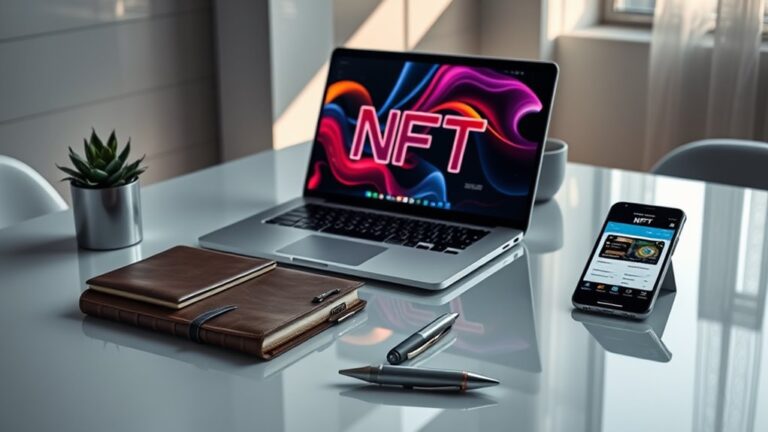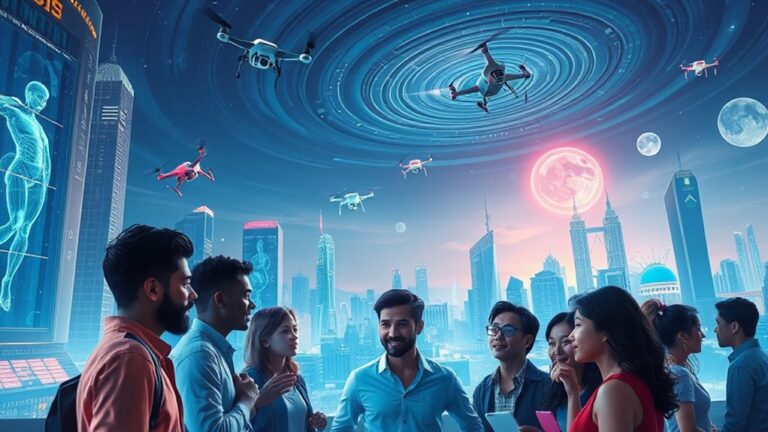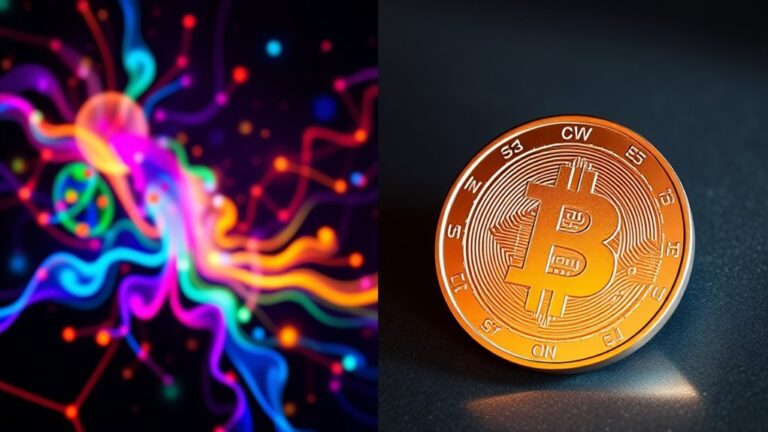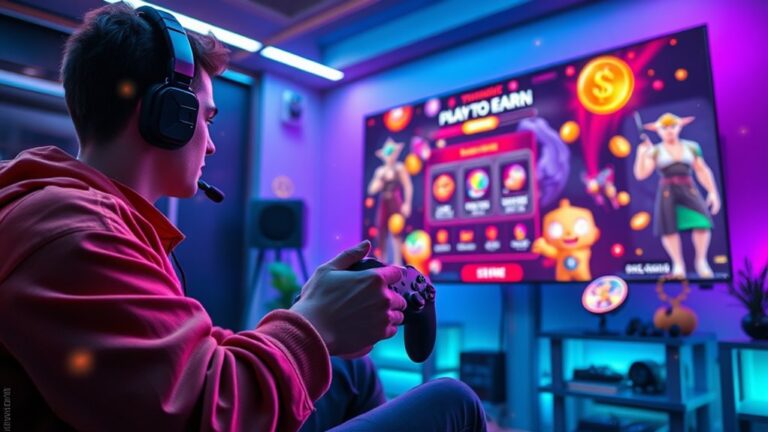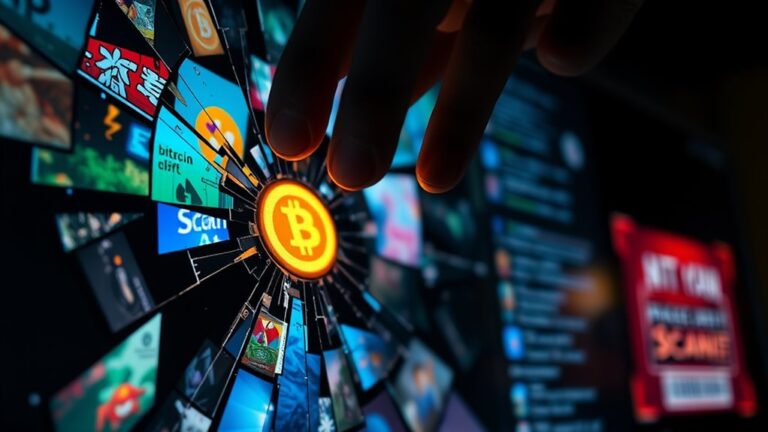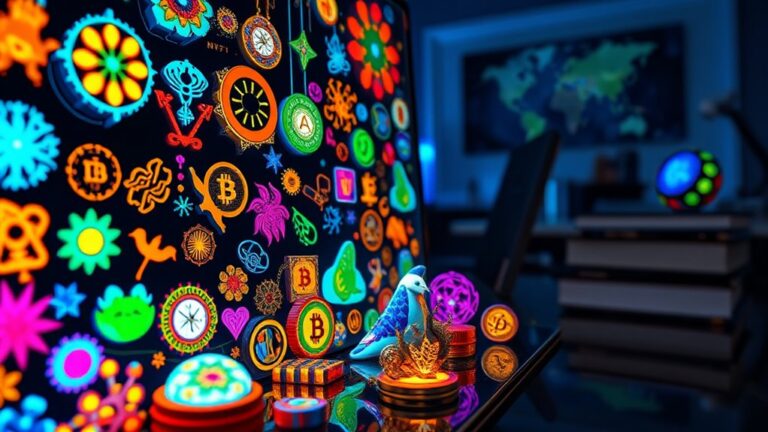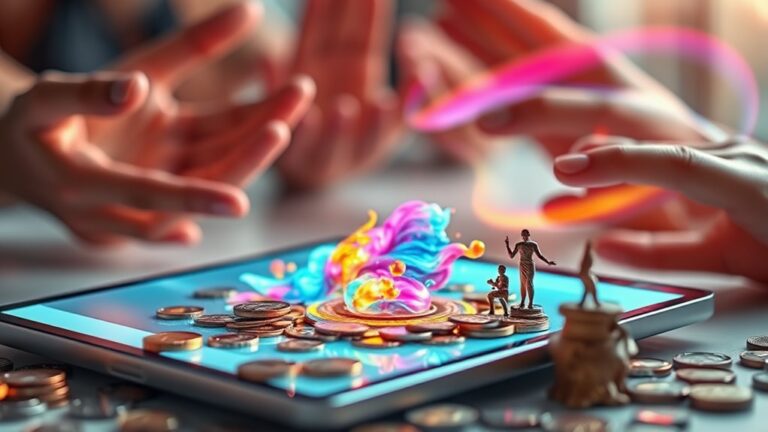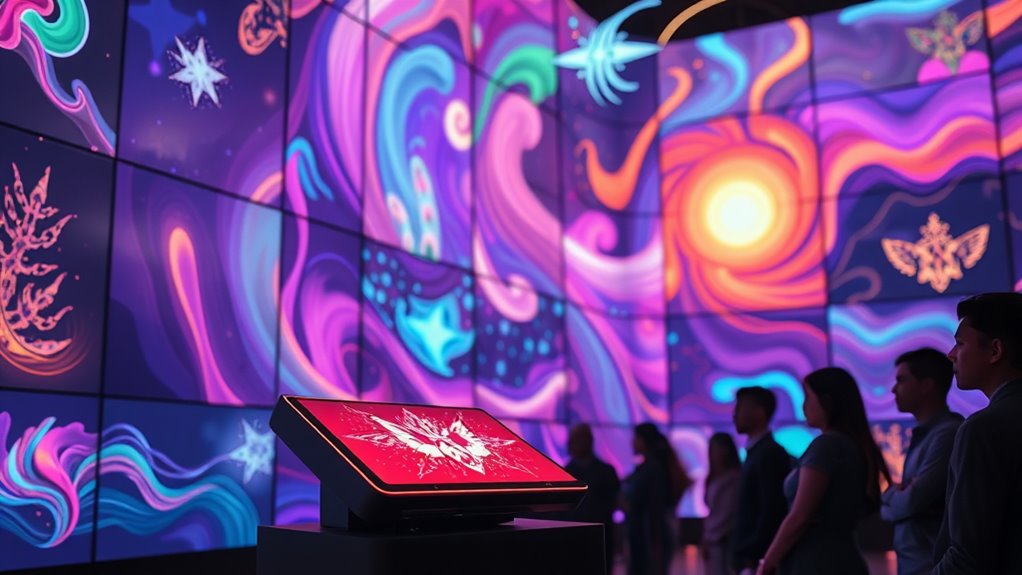
Dynamic NFTs: What Are They and How Do They Work?
Dynamic NFTs are a type of digital asset that can change and evolve over time. Unlike static NFTs, which remain unchanged, dynamic NFTs utilize smart contracts and external data sources to automate updates. This technology allows them to reflect real-time information, enhancing user experience. Examples include gaming characters that develop as players progress and digital art that transforms based on current events. There are many applications and advantages of dynamic NFTs, inviting further exploration of their potential.
Key Takeaways
- Dynamic NFTs are digital assets that evolve over time, allowing for real-time updates and changes to their metadata without altering their unique identifier.
- They utilize smart contracts to automate updates based on predefined rules and oracles to connect with external data sources.
- Unlike static NFTs, dynamic NFTs offer flexibility and interactivity, enhancing user engagement through adaptability in various applications.
- Examples include gaming characters that evolve based on player actions and digital art that changes according to real-world data.
- Dynamic NFTs provide unique advantages for creators and collectors, including ongoing royalties and personalized engagement through evolving features.
Understanding Dynamic NFTs

Dynamic NFTs, or non-fungible tokens that can evolve over time, represent a significant advancement in the world of digital assets. Unlike static NFTs, which remain unchanged once created, dynamic NFTs can adapt based on external conditions.
Dynamic NFTs revolutionize digital ownership by evolving over time and adapting to external conditions, unlike their static counterparts.
This adaptability allows for updates to their underlying data without altering the unique identifier of the token. Programmable features enable interactivity, making them highly versatile for various applications.
For instance, in gaming, characters can evolve as players progress, while digital art can change its appearance based on real-world data. These characteristics not only enhance user engagement but also provide greater customization options.
Ultimately, dynamic NFTs offer a fresh perspective on digital ownership by transforming how assets function and interact within their ecosystems.
The Technology Behind Dynamic NFTs

The technology behind dynamic NFTs is rooted in several key components that work together to create their unique functionalities.
These components include smart contracts, decentralized technologies, and oracles, which facilitate the dynamic nature of these NFTs.
Key elements contributing to their operation are:
- Smart Contracts: Automate updates based on predefined rules, allowing for seamless changes without manual intervention.
- Oracles: Connect smart contracts to external data sources, enabling real-time updates and integrations.
- Blockchain Standards: Common standards like ERC-721 and ERC-1155 provide the framework for building dynamic NFTs, with ERC-1155 often preferred for its flexibility.
Together, these technologies enable dynamic NFTs to adapt and respond to changing conditions, enhancing their interactivity and value in various applications.
Key Differences Between Static and Dynamic NFTs
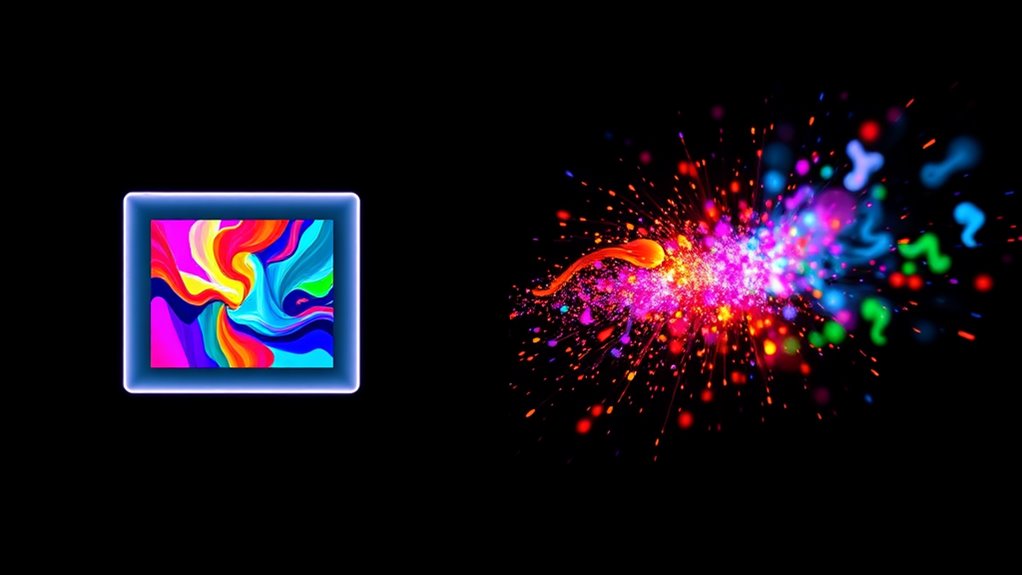
The key differences between static and dynamic NFTs lie primarily in their immutability and changeability.
Static NFTs remain fixed after creation, providing a sense of security and simplicity, while dynamic NFTs allow for modifications that can enhance user engagement through real-time updates.
This flexibility in dynamic NFTs can introduce both opportunities for interactivity and potential vulnerabilities, setting the stage for varied applications across different industries. For example, in gaming, dynamic NFTs can represent in-game assets that evolve based on player interactions or achievements.
Immutability vs. Changeability
Immutability and changeability represent two fundamental characteristics that distinguish static NFTs from dynamic NFTs.
Static NFTs are unchanging once minted, ensuring a fixed state that is permanent and secure. In contrast, dynamic NFTs can modify their metadata based on predetermined conditions.
Key differences include:
- Immutable Nature: Static NFTs guarantee permanence, making them ideal for digital collectibles.
- Modifiable Nature: Dynamic NFTs can adapt and update information, enhancing their utility in various applications.
- Complexity: The creation of dynamic NFTs requires intricate smart contract logic compared to the straightforward nature of static NFTs.
These differences highlight how static NFTs excel in providing stability, while dynamic NFTs offer flexibility, catering to diverse user needs and experiences in the digital landscape. Furthermore, the rise of utility-driven NFTs is pushing the boundaries of what dynamic NFTs can achieve, offering unique rewards and governance rights that enhance their appeal.
Interactivity and User Engagement
Dynamic NFTs allow for real-time updates and personalization, encouraging user involvement through interactions that can modify the NFT’s appearance or features. Unlike static NFTs, which remain unchanged, dynamic NFTs evolve based on external events, such as sports scores or weather conditions, creating a more engaging experience. Brands often use these NFTs for loyalty programs that adapt to customer behavior, fostering a stronger connection between users and their digital assets. Additionally, the integration of smart contracts and oracles enables diverse applications, enhancing interactivity across various industries, including gaming and digital art, ultimately leading to increased user retention and engagement. Moreover, dynamic NFTs are gaining traction in Play-to-Earn games, where they can represent unique in-game assets that evolve with player achievements and activities.
Practical Applications of Dynamic NFTs

Dynamic NFTs have a variety of practical applications across multiple sectors, including real estate, gaming, and art.
In real estate, these NFTs can represent properties with values that change over time, reflecting market conditions.
In gaming, they enhance player experiences by allowing characters and items to evolve based on achievements, while in the art world, they create collectibles that can change appearance and engage viewers through interactivity.
Real Estate Innovations
As the real estate market evolves, the integration of dynamic NFTs offers significant innovations that can reshape property management and transactions. These advancements streamline processes and enhance transparency, benefiting both buyers and sellers.
Key applications include:
- Tokenization of Properties: Properties can be tokenized, allowing metadata updates based on renovations or sales history.
- Automated Reporting: Dynamic NFTs can automate the reporting of property conditions, thereby improving data accuracy for potential buyers.
- Verification of Ownership: They provide secure verification of ownership, reducing the risk of counterfeit claims.
Through these innovations, dynamic NFTs facilitate efficient transactions, enhance user engagement, and adapt to market trends, making property management more accessible and reliable.
This technological integration represents a promising future for real estate.
Gaming Experience Enhancement
In the domain of gaming, the innovative integration of NFTs has considerably transformed player experiences, particularly through the use of dynamic NFTs (dNFTs). These digital assets can evolve over time based on player actions and in-game events, creating immersive environments.
For instance, characters and items can change attributes as players achieve milestones, enriching gameplay depth and engagement. In multiplayer settings, dNFTs can alter ownership of in-game items based on competition results, ensuring fairness through mechanisms like the Verifiable Randomness Function.
Additionally, augmented reality (AR) games leverage dNFTs to offer location-based challenges, further blending physical and digital interactions. Overall, dynamic NFTs foster creativity and personalization, enhancing the evolving narratives within gaming worlds. As the metaverse expands, the potential for virtual land NFTs to integrate with dNFTs presents exciting opportunities for innovative gameplay and player investment.
Evolving Art Collectibles
Evolving art collectibles represent a significant advancement in the world of digital art through the use of dynamic NFTs (dNFTs).
These innovative collectibles change over time, offering unique experiences for both artists and collectors. Key features include:
- Changing Visuals: Artwork can evolve, revealing new scenes or styles at specific intervals.
- Interactive Elements: dNFTs incorporate animations and multimedia, enhancing viewer engagement.
- Real-time Updates: Art can be modified based on external data or user interactions, fostering ongoing interest.
The adaptive nature of dNFTs not only enhances artistic expression but also transforms the way ownership and collectibility are perceived. As the market expands with utility NFTs providing additional benefits, the potential for creativity and investment grows even further.
As art evolves, so do the possibilities for creativity and investment, marking a new era in the digital art landscape.
Advantages of Dynamic NFTs for Collectors and Creators
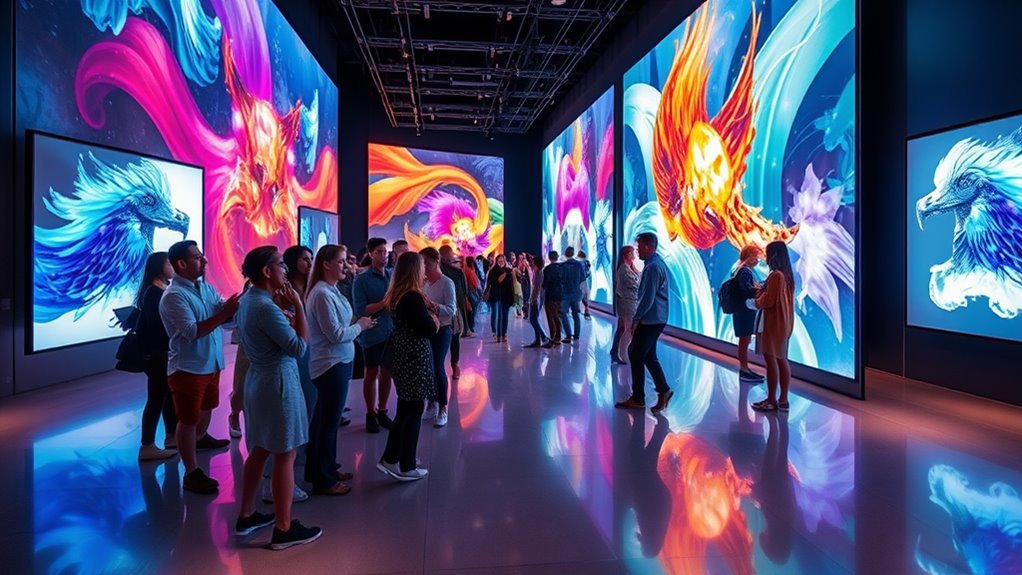
Dynamic NFTs offer a range of advantages for both collectors and creators, enhancing the overall experience in the digital asset space.
Dynamic NFTs enrich the digital asset landscape, delivering unique benefits for both collectors and creators alike.
For collectors, these NFTs provide interactivity and personalization, allowing unique engagement with digital assets. They can also create new income streams through trading and investment while benefiting from automatic metadata updates.
For creators, dynamic NFTs allow for greater programmability and the development of evolving art forms, fostering creativity. Additionally, creators can earn royalties from ongoing interactions and engage audiences more effectively. This constant engagement not only boosts brand awareness but also offers unique experiences, further empowering artists in the music industry.
The Future Landscape of Dynamic NFTs

What does the future hold for dynamic NFTs as technology and creativity continue to advance? The landscape for dynamic NFTs is likely to evolve notably, driven by innovative features and integrations.
Key developments may include:
- Adaptive Design: NFTs that can adjust based on real-time data, reflecting changes in circumstances like sports scores or environmental updates.
- Interactivity and Personalization: Enhanced user experiences as NFTs respond to user interactions and external events, making them more engaging.
- Integration with Real-World Assets: The ability to tokenize real properties or collectibles, ensuring a dynamic record of ownership and value.
As these features mature, dynamic NFTs may redefine ownership and engagement in digital assets, bridging the gap between virtual and real-world experiences. Furthermore, the potential for unique digital assets to integrate with cryptocurrencies offers a new dimension to their functionality and appeal.
Exploring Innovative Use Cases for Dynamic NFTs

The potential of dynamic NFTs extends far beyond theoretical concepts, as innovative use cases are being explored across various sectors. These applications leverage the unique properties of dynamic NFTs to enhance user engagement and interactivity.
| Sector | Use Case Example | Benefits |
|---|---|---|
| Gaming | Evolving characters or items | Increased player retention |
| Digital Art | Changing visuals based on time | Enhanced viewer experience |
| Real Estate | Updating property values | Accurate market insights |
Dynamic NFTs can represent gaming items that evolve with player progress, while digital art can transform based on viewer interactions. In real estate, these tokens reflect changing property values, providing accurate insights. Such innovative uses illustrate the versatility and potential impact of dynamic NFTs across different domains. Additionally, dynamic NFTs can also utilize unique metadata to enhance their functionality and interactivity.
Frequently Asked Questions
Can Dynamic NFTS Be Used in Physical Asset Tracking?
Dynamic NFTs can effectively track physical assets by verifying authenticity, managing supply chains, and updating asset information in real-time, thereby reducing counterfeiting risks and ensuring quality control through blockchain technology and smart contracts.
How Do Dynamic NFTS Ensure Data Security and Privacy?
Like a fortress protecting treasures, dynamic NFTs guarantee data security and privacy through decentralized oracles, zero-knowledge proofs, and robust metadata management, shielding sensitive information while facilitating adaptability in a constantly evolving digital landscape.
What Are the Environmental Impacts of Dynamic NFTS?
The environmental impacts of dynamic NFTs primarily stem from energy consumption during transactions. However, advancements in blockchain technology, such as proof-of-stake algorithms and renewable energy use, considerably mitigate these concerns and enhance sustainability.
How Can Creators Monetize Dynamic NFTS Effectively?
Creators can effectively monetize dynamic NFTs by embracing innovative engagement strategies, setting custom royalty rates, and utilizing interactive elements. These approaches foster ongoing user participation, ultimately enhancing value and attracting a dedicated audience enthusiastic for unique experiences.
Are There Specific Platforms for Trading Dynamic NFTS?
Various platforms exist for trading dynamic NFTs, including Ethereum-based options like OpenSea and Solana’s Magic Eden. Specialized marketplaces and those utilizing Chainlink oracles further enhance trading experiences through real-time updates and interoperability.
Conclusion
To summarize, dynamic NFTs represent a significant evolution in the digital asset landscape, enabling real-time updates and interactions that static NFTs cannot offer. According to a recent study, 70% of collectors express interest in NFTs that can change over time, highlighting a growing demand for more engaging and versatile digital collectibles. As technology continues to advance, dynamic NFTs are poised to reshape the way creators and collectors engage with digital art and assets, offering innovative possibilities for future applications.

